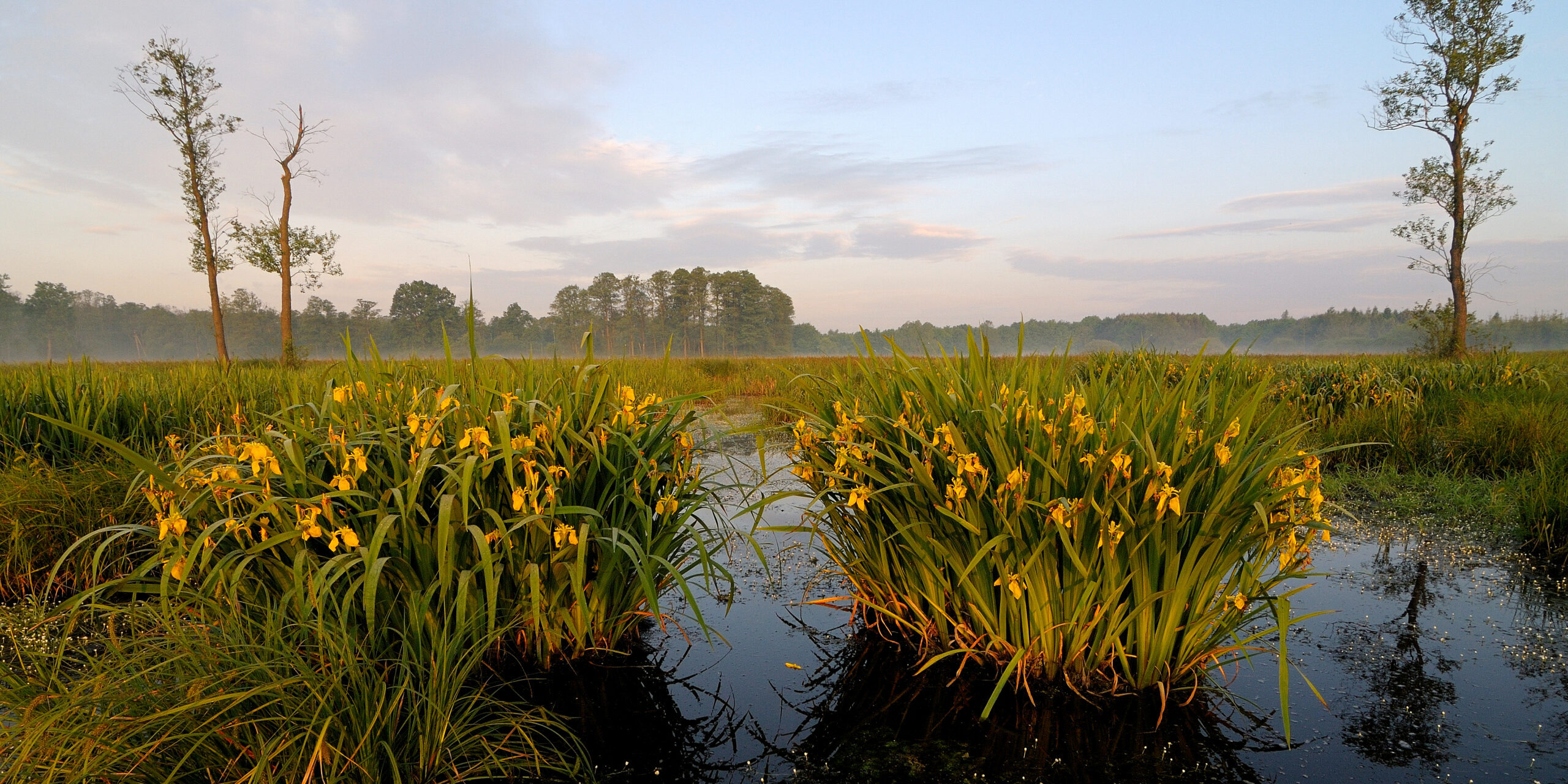
Protection and restoration of wetlands in “Puszcza Kampinoska” Natura 2000 site
(LIFE 19/NAT/PL/000746)
https://www.kampinoskiebagna.pl/en/home-kampinos-wetlands-2/
Kampinos Wetlands and Kampinos WetLIFE are projects aiming to protect wetland habitats in the Kampinos Forest (central Poland).
Drainage activities that have taken place since the middle of the 19th century in the Kampinos Forest have led to the desiccation of marshes and the withdrawal of many rare plant and animal species. At present, the progressive purchase of privatly-owned land through the Kampinos National Park and the disappearance of agriculture in this area lead to the situation that drainage network built in the past has lost its economic importance in many parts of this area. As a result, many actions are planned to adapt water network to the current needs of nature in the Kampinos Forest.
Project duration: 1.09.2020 – 30.06.2026
Project partners: the project is carried out by a team consisting of four institutions:
- REC Poland – coordination of the project, hydrotechnical measures and social communication,
- Kampinos National Park (KPN) – land purchase,
- Warsaw University of Life Sciences (SGGW) – nature monitoring,
- Marshal’s Office of the Mazowieckie Voivodeship (UMWM) – initiating wetland conservation in the Mazovian region, organisation of the closing conference.
Project objectives and planned activities:
The project aims to restore and increase ecological resilience of 6141,5 ha of Natura 2000 habitats and habitats of Natura 2000 species located in the Kampinos Forest.
Detailed project objectives are as follows:
1) Improving hydrological conditions:
It is planned to increase water retention in a broad scale by reducing the volume of surface runoff in Kampinos Forest. Technical measures planned are expected to cause significant improvement of Natura 2000 habitats and species conditions thanks to the rise of the groundwater level in the wetlands. It will also enable the restoration of the unique, braided water circulation system in this area.
2) Improving the conservation status of Natura 2000 habitats and species through specific nature conservation measures
A number of specific actions that improve conditions of certain species and habitats have been planned. Most of the project actions are planned to improve habitats and support populations of rare Natura 2000 invertebrates: for wetlands invertebrates: Leucorrhinia pectoralis 1042, Maculinea teleius 1059, Lycaena dispar1060, Graphoferus bilineatus 1082, Vertigo angustior 1014, Vertigo moulinsiana 1016 and Anisus vorticulus 4056. These actions dedicated for invertebrates and other specific means will improve conservation status of other Natura 2000 species and habitats, too.
3) Reducing conflict areas between the interests of local communities and nature protection
The main channels are draining urban areas within and at the outskirts of the Kampinos Forest. In such a setting, conflicts of interests may occur between nature conservation and local communities. To mitigate these conflicts, it is planned to purchase land from people living in the area. The land that will be bought is useless for intensive agriculture due to its permanent isaturation and seasonal inundation. Land purchase and restoration measures will be followed by the communication program that will help to raise the level of acceptance for wetland conservation in the area.
4) Initiation of regional and international activities for wetland protection
A number of workshops and meetings will be conducted that will ensure not only knowledge transfer but will also generate a number of specific regional and international initiatives for wetland protection. This will lead to multiplication of project’s results, as well as contribute to the engagement of other sources of financing for nature conservation
Project results
The following natural outcomes are planned to be achieved:
1. Construction of dams (C1, C2). The most important measure in the project will be the construction of 15 permanent dams on three most important watercourses in the Kampinos Forest: Łasica channel, Ł9 channel and Zaborowski channel. Additionally, 12 dams will be constructed on the secondary channels. Damming height as well as the width of flow will be adjusted to ensure the best available water condition for Natura 2000 habitats and species (to increase minimum level of water in open water habitats, increased seasonal flood in the habitat *91E0 and no to over flood 9170 and 6510 habitats), but also to ensure a free outflow of high water from urban areas that are located on a higher elevation. The precise location of dams will be chosen for the high water to supply longitudinal land depressions that are remnants of primeval hydrological network of the area. As there is no possibility to regulate damming height of the dams, these objects will be located far from private land, to avoid potential conflicts.
2. Restoration of channels’ hydromorphology (C3). The project anticipates restoration of ca. 8560 m of channels. Despite the lack of recent maintenance, these watercourses still keep the profile characteristic for draining channels which is not an optimal habitat for protected species. The use of various restoration methods has been planned: re-meandering, flattening slopes, broadening fragments of channels and putting natural obstacles into the channel.
3. Construction of small ponds (C4). The project will enable construction of 35 small ponds. It will be especially important for Natura 2000 invertebrate Anisus vorticulus 4056 and amphibians (Trituris cristatus 1166 and Bombina bombina 1188). Ponds will also increase the conditions for other species and mosaic of habitats that will result in the enhancement of biodiversity of the area and improve ecosystem resistance to long-lasting and severe droughts.
4. Conservation of open habitats (C5-C7). Activities to protect semi-natural open habitats will be implemented on ca. 108 ha; initial mowing and grazing, scrub removal, removal of invasive species, and planting of desired trees and shrub species are planned to be undertaken on these plots. These activities will improve the conservation status of Maculinea teleius 1059 and Lycaena dispar1060. It will also improve conservation status of Arrhenatherion 6510 habitats and species: Crex crex A122, Clanga pomarina *A089 and others.
5. Reintroduction of Natura 2000 invertebrates: Vertigo angustior 1014 , Vertigo moulinsiana 1016, Anisus vorticulus 4056 (C11). The reintroduction will be preceded by a detail research on their existing populations and selection of the best available places for reintroduction. This reintroduction will be based on ex situ breeding and will allow to create 7-10 new sub-populations of each of the species.
6. Reduction of Neovison vison population (C8). In order to reduce predation pressure on Natura 2000 fish, amphibians and birds it is planned to trap individuals of Neovison vison during the project. Catches will be conducted along 80 km of KPN watercourses using 20 traps. Involvement in this work allows to prepare KPN staff to continue these activities after the end of the project.7
7. Active protection of the Ciconia nigra A030, Haliaeetus albicilla A075 and Clanga pomarina A089 (C9). Protection of these species will be achieved by building 14 nest platforms and 10 facilities protecting nests against land predators.
8. Support for populations of 1188 Bombina Bombina and 1166 Triturus cristatus (C10) by reintroduction of these species in newly created ponds (C4) and adaptation of old remaining basements for wintering these amphibians.
9. Land purchase (B1). About 80 ha of land will be purchased on the areas neighboring hydrotechnical objects that will be built as a part of Actions C1-C4. These areas are frequently flooded and, as a result of the project actions, they will become useless for intensive agriculture.
10. Communication with the public and Natura 2000 promotion (E1 – E5). An important element of the project will be communication activities, targeted at local community. They will concern Natura 2000 network as well as raising awareness and acceptance for nature conservation measures. For this purpose a number of local meetings is foreseen, as well as participation in mass events, publications, information boards, trainings, etc.
11. Replication and knowledge transfer (E6). Several activities dedicated to the real replication and transfer or the project experience are planned. As a result of several meetings, workshops and expert support it is expected to develop by the end of the project at least one concept for the international project concerning wetland protection and at least 30 local initiatives concerning water retention and biodiversity protection in the neighborhood of Kampinos Forest.



 POWRÓT
POWRÓT